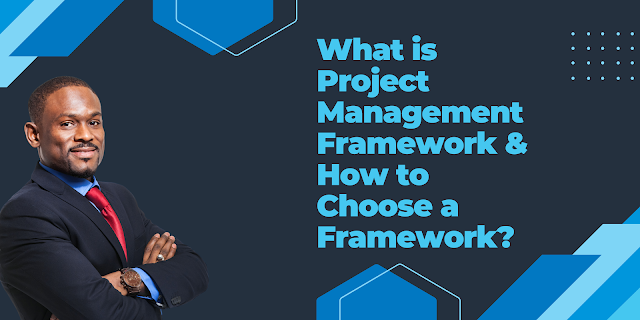What is Project Management Framework & How to Choose a Framework?
What is Project Management Framework & How to Choose a Framework?
Project Management has grown in the last few years and has taken over many other types of standard management strategies. Project Management strategies are simple, with clear divisions and deadlines, making it easier to meet client expectations.
A Project Management Framework is a set of methods, procedures, and rules that relate to and cover the entire lifecycle of a project. A Project Management Framework defines the outline of a project from initiation to delivery.
Project Management Framework Process
PM frameworks cover all phases of the PM lifecycle: micro, macro, and everything in between. With a well-structured framework and integrated systems for processes, tasks, roles, and checklists, managers can more easily plan, schedule, implement, monitor, and execute projects successfully.
- Initiation — The first stage of the PM framework is initiating the project. In this stage, Project Managers work together with stakeholders to determine the viability and value of the project. The two tools used in this stage are the Business Case Document and Feasibility Study.
- Planning — The venture arranging stage starts when the commencement stage is supported by every one of the partners engaged with an undertaking. This is where the Project Manager designs the subtleties of the task, including its degree, plan, spending plan, assets, and dangers.
- Execution — As the name proposes, the execution stage is where the plans are scrutinized. In this stage, the whole PM group expects to guarantee that every one of the necessary expectations is made and finished sooner or later. This stage includes incessant group gatherings to talk about project progress, improvement updates, and execution reports.
- Performance Control — The fourth stage spins around observing and controlling the venture execution results. In this stage, PM, alongside the group, gauges the undertaking movement and execution while guaranteeing that all that advances as per the arrangement. The KPIs utilized in this stage incorporate undertaking targets, quality expectations, cost checking, and in general task execution.
- Termination — The venture comes to the conclusion stage once every one of the expectations is given over to the client/client. After the client/client has approved and closed down the task as complete, the PM holds a last conclusion meeting with the group and partners to examine the experience and close venture accounts.
Benefits of Using a Project Management Framework
A Project Management Framework can bring five major benefits to the table, thereby completely redefining how projects are handled, executed, and delivered. The five major benefits of a Project Management Framework are:
Consistency — One of the main advantages of the PM system is conferring consistency to the task arranging and execution. Since a Project Management Framework puts a severe accentuation on itemized project arranging, the general methodology is predictable and obvious. Consistency further assists with carrying accuracy and clearness to the task.
Clarity — In the underlying stages itself, a PM system characterizes and clarifies the extent of the venture for everybody engaged with the undertaking. This leaves no space for disarray and equivocalness because of which the task keeps on advancing as per the arrangement. Since the colleagues know what precisely they need to do at each stage, the outcome is significantly more intelligible and moved along.
Collaboration — A PM structure promptly includes every one of the partners in a venture right toward the start until the undertaking arrives at the last end-stage. Normally, it energizes cooperation between the individuals from the PM group and the partners. Subsequently, everybody engaged with the task selects a strong and cooperative methodology. This not just assists with completing the task at the ideal speed yet in addition essentially works on the nature of the finished result.
Continuity — Since everything is clear-cut and arranged forthrightly, a Project Management Framework is about coherence and effectiveness. Because of the arranging mix, ventures can move flawlessly from the commencement stage to the endpoint. Moreover, the PM system works with smooth progress among both new and experienced members. While it further develops the expectation to learn and adapt to new individuals in the PM group, it reinforces the information on experienced members. Thus, when a venture is finished, and another task is going to start, the colleagues can consistently bounce ready for the new undertaking since the center structure continues as before.
Communication — The Project Manager, the PM group, and the partners are undeniably elaborate intently in an undertaking, and the line of correspondence generally stays open among them. Each phase of the PM structure includes every one of them working intimately with each other to decide the extension and motivation behind the venture and furthermore every one of the cycles is remembered for something very similar. The higher the correspondence remainder among every one of the partners, the smoother the task work process.
How to Choose a Project Management Framework?
When it comes to choosing a Project Management Framework, it can get overwhelming as the choices are many. However, it doesn’t have to be a nerve-wracking decision. Here’s how you can choose the right Project Management Framework for your project:
1. Evaluate the scope and size of the project at hand
The size and extent of an undertaking are two of your preferred significant determinants of a PM structure. A venture can be gigantic, requiring cross-practical groups to deal with them and can endure as long as quite a while, or it tends to be a little one expecting around three to four individuals dealing with it for a brief period.
While huge and more intricate tasks require a drawn-out timetable and an elaborate way to deal with project arranging, versatile PM structures like Agile are the most ideal for such undertakings. Then again, more modest undertakings with less muddled prerequisites can do well with inflexible philosophies like the cascade system, since there will be compelling reasons need to change the business necessities generally.
2. Make a list of potential PM frameworks
Whenever you’ve recognized the extension and size of your undertaking, don’t take a plunge straight with a severe decision of a PM system. All things considered, create a waitlist of all the conceivable PM structures that can gel well with your task. Presently, put them against each other and gauge their advantages and disadvantages. The point is to find the PM system that can best suit your undertaking needs. You want to achieve the most ideal outcomes while limiting the dangers.
3. Acquire buy-in from your team
Despite the fact that you might have found “the one” (actually discussing the PM system) for your undertaking, you can’t rest assured that every one of your partners will back your decision altogether. This is normally because of various individual points of view and perspectives. Be that as it may, as a capable pioneer, you must stand by listening to the perspectives of your colleagues and afterward get purchase in on your decision. On the off chance that you don’t procure a purchase from your group, obviously, there will be clashes in the group, and consequently, the undertaking won’t advance without a hitch.
4. Verify your choice
After you and your colleagues have settled on the PM system, you should check the possibility of your decision. To do as such, you can begin by looking at the achievement pace of the PM system by evaluating the presence and aftereffects of past tasks conveyed through a similar structure.
As the undertaking advances, ask for criticism from your group to check whether the PM structure is helping support their proficiency and in the event that it is working on the nature of the item. At last, you should lead a self-evaluation test as a Project Manager to check in the event that the PM system permits you to productively deal with the group and partners.

.png)


Comments
Post a Comment